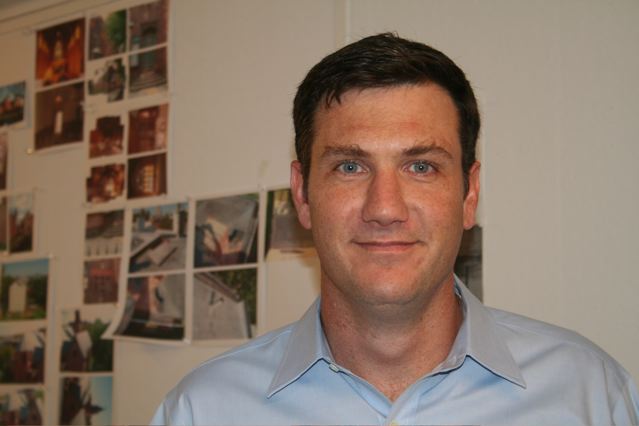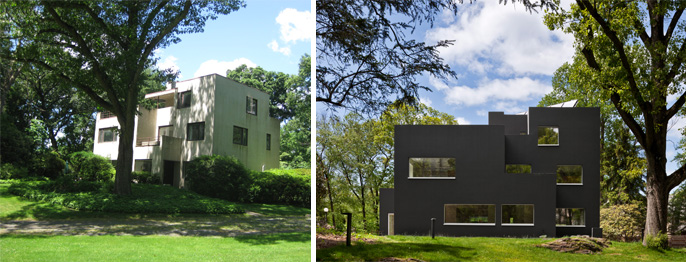Eye on Alumni
Ken Levenson (B. Arch.’89)
After a successful run designing homes in greater New York City according to German Passive House principles, Ken Levenson decided to close his decade-old firm and launch 475 High Performance Building Supply. The online store fills an underserved niche market by providing hard-to-find architectural products for those designing according to Passive House standards in the United States.

How did you get involved with the Passive House movement?
I was interested in reducing energy use, but not sure how I could incorporate it into my practice. I didn’t get into designing according to LEED criteria [the prevailing sustainability guidelines administered by the U.S. Green Building Council] because it was hard for me to convince a client that performance metrics and increased comfort were worth the investment. Plenty of green buildings are still energy hogs. LEED certification, for example, has such a long list of green measures like high recycled content, lowered water usage, and better ventilation, that you can hit them all, but fall completely short when it comes to energy.
What clicked for me with the Passive House approach is that it is straightforward and narrowly focused, so that you have a high probability of hitting your goals. If you do X, Y, Z, you can have up to 90% reduction in heating and cooling demand. And that is the level of percentage we need to be achieving if we want to really fight climate change.
What are the origins of the Passive House movement?
Passive House standards were first used in four row houses in 1990 in Darmstadt, Germany. In 1996, the Passive House Institute was established by German physicist Wolfgang Feist and Swedish academic Bo Adamson to promote and develop the standards.
What are the basic principles of the Passive House movement?
The overarching idea is to drastically decrease the energy used for heating and cooling, the primary energy demand of a building. And within that there are five tenets—
- Continuous high-level insulation, which completely surrounds the living space without stopping and starting at corners and joists.
- Thermal bridge-free construction. For example, a typical metal window frame allows great heat loss.
- Air tightness. Like the insulation, an airtight layer must completely surround the occupied space. Air leaks are the number one cause of wasted energy and poor comfort.
- A ventilation system that filters fresh air to living spaces and allows for heat recovery.
- Good windows and doors, that are triple glazed, gasketed, and thermally broken, meaning they are able to retain heat.
 A before and after of Levenson's recently completed Passive House in Westport, Connecticut. Originally built in the 1930s in the International Style, it was wrapped in insulation, new windows were put in, and a ventilation system and solar panels were installed.
A before and after of Levenson's recently completed Passive House in Westport, Connecticut. Originally built in the 1930s in the International Style, it was wrapped in insulation, new windows were put in, and a ventilation system and solar panels were installed.
How did you decide to start 475 High Performance Building Supply?
My partners and I started the business a little over a year ago. We met working on Passive Houses together. One partner is a building science consultant who was trained as an architect in the Netherlands and the other is the contractor who had worked on the Passive House projects.
We got the idea to start the business when we were working on the Brooklyn Heights project, because we struggled to find the right materials. The building supply industry wasn’t interested in helping us out, so we came out of the project thinking we should start our own business. We are now the exclusive importer in the U.S. for an air sealing systems manufacturer in Germany.
What are the implications of the Passive House approach with regard to climate change and our dependence on the grid in light of Hurricane Sandy?
I think both sheltering-in-place [when disaster strikes you don’t need to escape but can stay safe where you are] and general resiliency are going to be big issues going forward, and Passive House can clearly help in these efforts. Even in very cold weather, if the power/fuel goes out for an extended period, occupants can stay in place in relative safety and comfort. The buildings should reach an equilibrium of approximately 55 degrees without heat in freezing weather. And because the power/fuel demands are much less, the pressure on the larger utility systems is smaller, helping make the overall resilience a bit easier—or at least it would if we could build a lot of these.
Does Passive House work for large buildings?
Yes, the bigger the building is, the easier and more economically it works. A high-rise office building in Austria was recently completed. There are a lot of large buildings being built in Brussels and other cities, including whole new neighborhoods.
Does the Passive House approach work for existing structures?
Existing buildings are only good candidates if you are doing a gut renovation. Right off the bat there are a lot of projects that aren’t suitable. Row houses in the city are good because the party walls help dramatically with the energy balance. It wasn’t hard to meet the standards on the first house I did, in Brooklyn Heights, despite its East/West orientation.
How does your Pratt education inform your work?
The intensive architectural education I received at Pratt from Haresh Lalvani to Livio Dimitriu, and many other faculty, was an essential foundation for me, shaping my analytic and aesthetic way in the profession. And, today, I think Pratt is well-positioned to explore—and promote—solutions to the climate crisis as it grows ever more severe, from Passive House to other aggressive strategies that can combat climate change.
Text: Bay Brown
Photos: Courtesy of Ken Levenson

 Gateway Editors
Gateway Editors